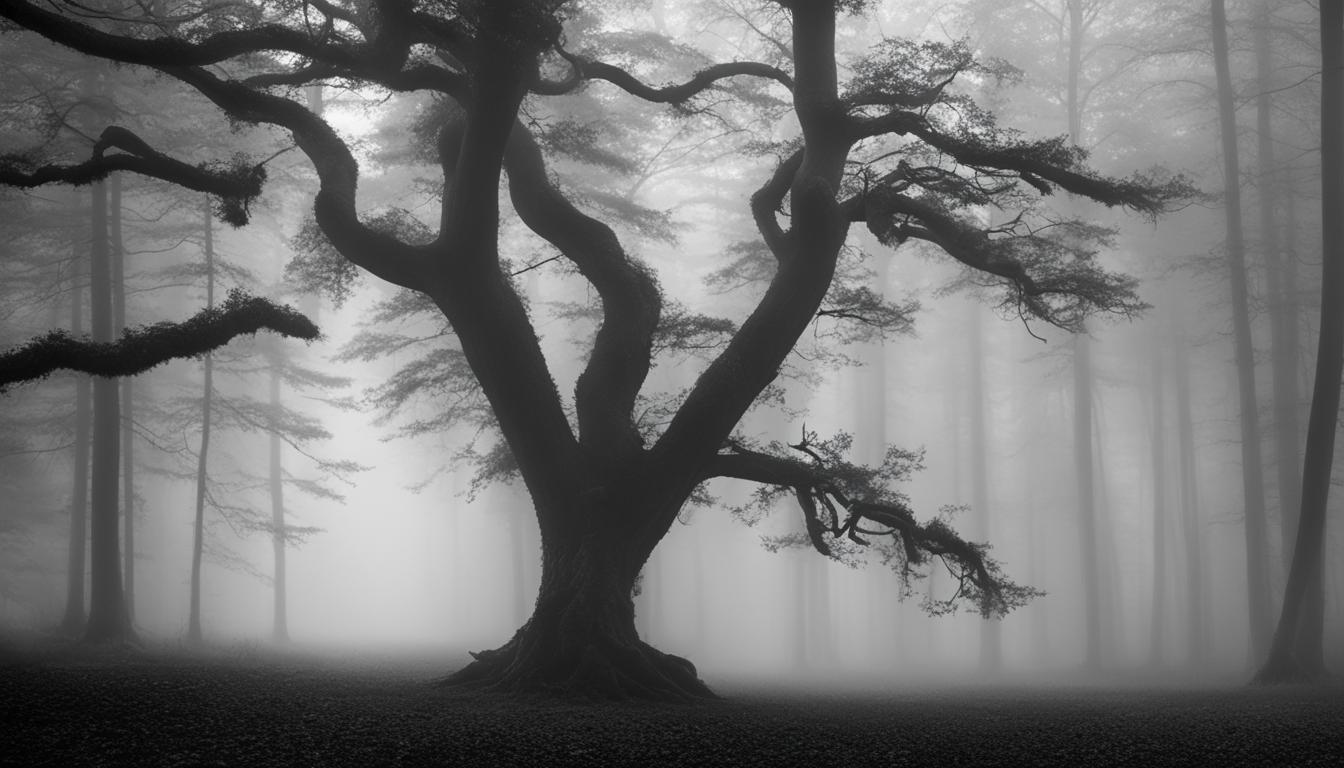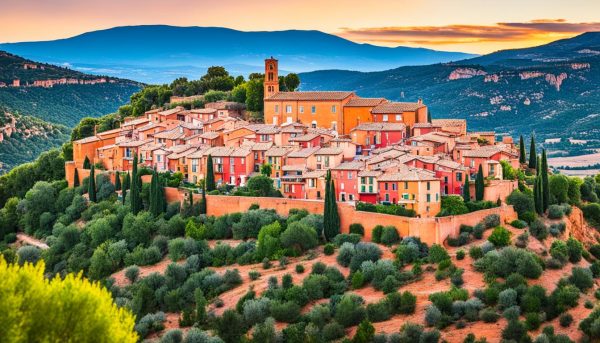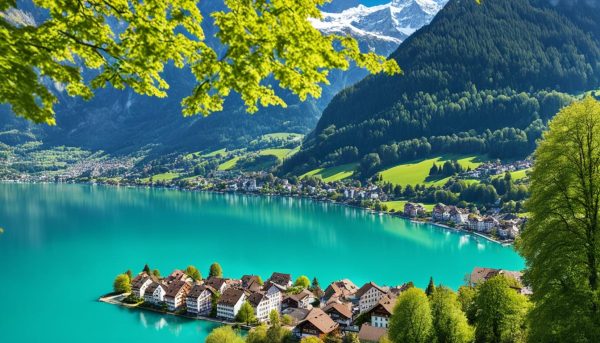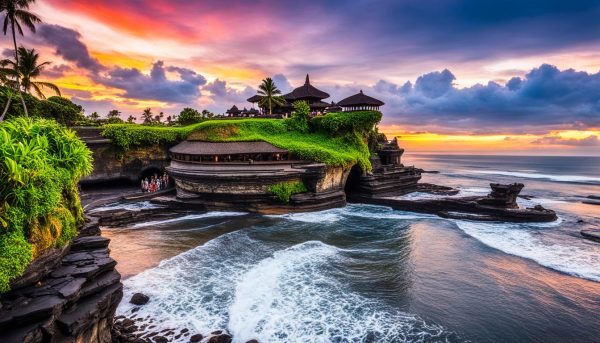Black and white photography has a unique aesthetic that can capture the essence of a moment like no other medium. Monochrome images have the power to evoke emotions, tell stories, and create stunning visual effects that are sure to leave a lasting impression on viewers.
In this article, we will explore the art of creating stunning monochrome images. From understanding the basics of black and white photography to mastering light and shadow, exploring different styles and approaches, utilizing post-processing techniques, and incorporating filters and long exposures, we will cover all the essential elements of monochrome photography.
Whether you’re a seasoned photographer or just starting, this article will provide you with the knowledge and techniques you need to take your black and white photography to the next level. By the end of this article, you’ll be equipped to create stunning monochrome images that will stand the test of time.
Key Takeaways
- Black and white photography offers a unique and powerful aesthetic.
- Monochrome images can evoke emotions and tell stories.
- Understanding the basics of black and white photography is essential for creating stunning monochrome images.
- Mastering light and shadow is crucial for capturing dramatic effects in monochrome photography.
- Post-processing techniques and filters can elevate your black and white photography to the next level.
Understanding the Basics of Black and White Photography
Black and white photography is a classic art form that has been around for over a century. While the advent of color photography has revolutionized the medium, black and white photography techniques remain relevant and sought-after. In this section, we will explore the basics of black and white photography, from capturing monochrome images to composing stunning visuals.
Black and White Photography Techniques
When shooting in black and white, it is important to consider the following techniques:
- Contrast: Contrast is key in black and white photography, and it can be achieved through lighting, composition, or post-processing.
- Texture: Texture is often enhanced in monochrome images, adding depth and interest to the photo.
- Tonal Range: Tonal range refers to the range of tones between black and white in an image; maximizing tonal range can greatly enhance the impact of a monochrome image.
Monochrome Composition
Composition plays a crucial role in creating stunning black and white photos. Consider the following elements:
- Lines: Strong lines and curves can help guide the viewer’s eye and create a sense of movement in the image.
- Shapes: Using shapes in your composition can create a pleasing visual balance.
- Patterns: Patterns can add texture and interest to a photo.
- Contrast: Utilizing contrast in composition can help emphasize certain elements and create visual interest.
“When you photograph people in colour, you photograph their clothes. But when you photograph people in black and white, you photograph their souls.” – Ted Grant
Black and white photography can feel daunting, but mastering the basics can open up a world of creative possibilities. In the next section, we will explore how to master light and shadows in monochrome photography.
Mastering Light and Shadows in Monochrome
Black and white photography offers a unique canvas to play with light and shadow, and mastering these elements is crucial in creating stunning monochrome images. By understanding how light works in black and white photography, photographers can create dramatic and dynamic effects that enhance the overall aesthetic of their work.
One of the key techniques used in black and white photography is shadow manipulation. Shadows can be used to create depth and contrast in an image, and manipulating them can lead to creative and interesting compositions. By adjusting the exposure and contrast levels in post-processing, photographers can make shadows appear darker or lighter, depending on the effect they want to achieve.
Contrast is also a critical aspect of monochrome photography. Contrast is created when there is a difference in the brightness of different areas in an image. High contrast images have bright highlights and deep shadows, while low contrast images have a more even distribution of light and dark tones. In black and white photography, contrast is important as it helps create definition and separation between different elements in the image.
Black and White Lighting
The right lighting is key to capturing stunning black and white images. When shooting in monochrome, it is essential to pay attention to the quality and direction of light. Soft, diffused lighting can create a gentle and dreamy effect, while harsh lighting can produce dramatic and striking visuals.
It’s essential to experiment with different lighting techniques to find the best approach for your subject and style. Natural light can create a soft and organic look, while artificial light can be used to create more controlled and deliberate effects.
Examples of Shadow Manipulation and Contrast Techniques
“In black and white photography, contrast is important as it helps create definition and separation between different elements in the image.”
By exaggerating the contrast and shadows in the image above, the photographer has created a sense of drama and intensity, emphasizing the power and energy of the waves.
Utilizing Shadows to Add Depth
Shadows can also be used to add depth and dimension to an image. By placing the subject in front of a light source, photographers can create a striking and dramatic image, with a strong sense of depth and three-dimensionality.
Experimenting with Light and Shadow in Black and White Photography
Experimenting with light and shadow is an essential part of mastering black and white photography. By playing with different lighting techniques and exploring the ways shadows and contrast can be manipulated, photographers can create stunning and unique monochrome images that stand out from the crowd.
Exploring Different Styles and Approaches in Monochrome Photography
Monochrome photography offers an incredible creative range, allowing photographers to experiment with different styles and approaches to create beautiful and unique images. To achieve stunning monochrome aesthetics, it is essential to understand the various black and white photography styles available and the art of making artistic choices in monochrome.
Black and White Photography Styles
One of the most important aspects of photography, including black and white, is style. Knowing what style you want to evoke in your images can help you create a strong visual identity and make a statement with your work. Some popular black and white photography styles include:
| Style | Description |
|---|---|
| Fine Art Photography | This style emphasizes the creative expression of the photographer and the aesthetic and emotional qualities of the image. |
| Documentary Photography | This style highlights the objective and informative qualities of black and white photography, often capturing real-life situations and events. |
| Street Photography | This style captures candid moments on the street, emphasizing the beauty and chaos of urban life and surroundings. |
| Portrait Photography | This style focuses on capturing the essence and character of an individual through monochrome aesthetics, often with dramatic lighting and strong emotions. |
Choosing a style that resonates with your vision can help shape your photographic voice and create a strong portfolio of monochrome images.
Artistic Choices in Monochrome
Creating stunning monochrome images requires making artistic choices, including selecting what to include in the frame and how to compose the image. Some artistic considerations when shooting black and white photography include:
- Contrast: Playing with the dark and light tones in an image can add depth and drama to your monochrome photographs.
- Texture: Utilizing texture can create interesting visual elements in your black and white images, adding depth and interest to the composition.
- Shapes and Lines: Using shapes and lines in your composition can create a sense of direction and movement, leading the viewer’s eye through the image.
- Emotions and Mood: Black and white photography has a unique ability to capture emotions and moods, evoking a strong emotional response from the viewer.
By making deliberate artistic choices and experimenting with different techniques, you can create unique and stunning monochrome images that showcase your artistic voice.
“Black and white are the colors of photography. To me, they symbolize the alternatives of hope and despair to which mankind is forever subjected.” – Robert Frank
The Power of Tonal Range and Texture in Monochrome
Tonal range and texture are two essential elements in creating stunning black and white images.
Tonal Range in Monochrome
Tonal range refers to the full range of tones between black and white in a monochrome image. Maximizing tonal range can add depth and interest to your photograph.
One technique to expand tonal range is using the “levels” adjustment layer in post-processing. This allows you to adjust the shadows, midtones, and highlights to create a more balanced and dynamic image.
Another way to expand tonal range is through the use of lighting. Experimenting with different lighting conditions can bring out different tonal ranges in your subject, allowing you to capture a wider range of tones in your image.
Texture in Black and White Photography
Texture refers to the surface quality of an object in a photograph. In monochrome photography, texture can add depth and visual interest to your image.
One way to emphasize texture is to use side lighting. This creates shadows and highlights that bring out the texture of your subject.
“In black and white photography, texture becomes an important element of the composition, especially in close-up shots. The absence of color can make texture appear more pronounced and significant, inviting the viewer to explore the subject’s surface.”
Another technique to highlight texture is through post-processing. Using the “clarity” or “sharpening” adjustments can enhance the texture of your subject and make it stand out in your image.
By utilizing tonal range and texture in your monochrome photography, you can create visually engaging and dynamic images that stand the test of time.
Post-Processing Techniques for Monochrome Images
While capturing striking black and white photographs is an art form in itself, post-processing can take your monochrome images to the next level. In this section, we explore some essential post-processing techniques to enhance contrast and clarity in your black and white photos.
Converting to Monochrome
First things first: to create a monochrome image, you’ll need to convert your color photo to black and white. Most photo editing software comes with a black and white conversion tool. However, not all conversions are created equal. Some may produce dull and lifeless results, while others can create stunning monochrome images with rich tones and contrast.
One of the best ways to convert to monochrome is to use a dedicated black and white conversion plugin or software. These tools often offer greater control over the conversion process, allowing you to adjust the tonal range, contrast, and clarity of your image for optimal results. Some popular black and white conversion plugins include Silver Efex Pro and Nik Collection.
Adjusting Contrast and Clarity
Contrast and clarity are key elements of any black and white image. They can help create depth and dimension in your photos, making them more visually engaging. Adjusting contrast and clarity is relatively easy, but it requires a careful balance to avoid over- or under-processing your images.
The Curves tool is one of the most powerful and versatile tools for adjusting contrast in monochrome images. It allows you to adjust the highlights, midtones, and shadows of your image independently, creating a custom tonal range. Increasing the contrast can help make the dark areas darker and light areas lighter, creating a more dynamic image. Additionally, the Clarity tool can help enhance the texture and details in your photos, giving them a sharper and more defined look.
Adding Grain and Noise
Adding grain or noise to your black and white images is a popular technique to create a vintage or film-like effect. Grain and noise can give your photos a more organic and textured look, adding character and depth to your monochrome images.
Most photo editing software comes with a grain or noise filter. However, you can also create your own custom grain effect by adding a new layer filled with gray pixels and setting its blending mode to Overlay. Then, adjust the opacity and fill of the layer to fine-tune the grain effect.
Using Filters and Long Exposures for Dramatic Effects
In the world of black and white photography, filters and long exposures can add a touch of drama and creative flair to your images. By using these techniques, you can create stunning effects that set your monochrome shots apart from the rest.
Monochrome Filters
One of the most popular and effective ways to enhance your black and white images is to use filters. These are special glass or plastic attachments that fit over your camera lens and alter the way light enters the camera.
There are several types of filters available, each designed to enhance certain aspects of your photos. For example, red filters can deepen the contrast between the sky and clouds in outdoor shots, while yellow filters can help bring out texture and detail in close-up shots.
Long Exposure in Black and White Photography
Another technique that can produce breathtaking results in monochrome photography is the use of long exposures. This involves leaving the shutter of your camera open for an extended period of time – usually several seconds or more – to capture movement and create a sense of motion in your images.
Long exposures are particularly effective in landscape and cityscape photography, where they can add a sense of dynamism and energy to otherwise static scenes. For example, you can use a long exposure to capture the movement of clouds across the sky or the light trails left behind by cars on a busy street.
Experimenting with Filters and Long Exposures
The key to using filters and long exposures effectively is to experiment and try out different combinations until you find the techniques and styles that work best for you. Whether you’re aiming for dramatic effects or subtle enhancements, these techniques can help you take your black and white photography to the next level.
Portraiture in Black and White: Capturing Emotion and Character
Black and white photography offers a unique way of capturing a subject’s emotion and character. By removing the distractions of color, black and white portraits can reveal a deeper, more intimate side of the subject. Here are some techniques for creating striking black and white portrait photography with emotional impact and character portrayal.
Focus on the Eyes
The eyes are often called the window to the soul, and this is especially true in black and white portrait photography. By focusing on the subject’s eyes, you can create a powerful connection with the viewer and convey a wide range of emotions.
Experiment with different angles and compositions to showcase the subject’s eyes. For example, you could use a shallow depth of field to blur the background and draw attention to the eyes, or you could shoot from a low angle to create a sense of intimacy and vulnerability.
Play with Light and Shadow
As with all black and white photography, light and shadow are key elements in creating striking portraits. Harsh, dramatic lighting can add depth and create interesting textures, while soft, diffused lighting can create a more ethereal, dreamlike effect.
Try experimenting with different lighting setups to see what works best for your subject and desired mood. You could use a single light source to create dramatic shadows, or you could use a reflector to soften the light and create a more subtle effect.
Capture the Subject’s Personality
Black and white portrait photography is a great way to capture a subject’s personality and character. Consider the subject’s posture, facial expressions, and clothing choices to tell a story and create a sense of who they are.
Encourage your subject to relax and be themselves during the photoshoot. Have a conversation with them, and ask them about their interests and passions. This will help you capture their true personality and create a portrait that is authentic and meaningful.
Showcasing Your Monochrome Masterpieces: Print and Display Options
After putting in the effort to create stunning black and white photos, it’s time to showcase them in the best possible way. Here, we’ll explore some of the best printing and framing options to highlight the timeless quality of your monochrome masterpieces.
Printing Your Black and White Photos
When it comes to printing your monochrome images, it’s essential to choose high-quality paper and ink to get the best results. Consider using a professional printing service that specializes in black and white photography to ensure that your prints are of the highest quality.
SEO relevant keyword: printing black and white photos
One important factor to consider when printing black and white images is to use a high-quality paper that has a wide tonal range. Look for papers that have a smooth surface to bring out the detail in your photos. You may also want to try different paper finishes, such as a glossy, luster, or matte finish, to see which one works best for your images.
If you’re printing your images at home, make sure you calibrate your printer settings to achieve accurate and consistent results. Use a printer that’s specifically designed for black and white photography and consider using pigment-based ink, which is known for its long-lasting archival quality.
Framing Your Monochrome Images
Choosing the right frame for your monochrome images is just as important as choosing the right paper for your prints. The frame you choose should complement the style and aesthetic of your images, enhancing their impact without overwhelming them.
SEO relevant keyword: framing monochrome images
Consider using a simple, classic frame that won’t detract from the beauty of your black and white photos. A neutral color, such as black, white, or natural wood, can be a great choice to help your images stand out.
When choosing a mat board for your frame, consider using a double or triple mat to add depth and visual interest to your images. Be sure to use acid-free mat board to preserve the quality of your prints over time.
Another option to consider is using a shadow box frame, which can add a dramatic effect to your monochrome images. This style of frame has a deeper profile that allows your photos to stand out and cast shadows, giving your images an added dimension.
To further enhance the impact of your framed black and white photos, consider grouping them together in a gallery wall display. This can create a stunning visual effect that showcases your monochrome masterpieces in a beautiful and cohesive way.
There are endless possibilities for printing and framing your monochrome images, so take your time to experiment and find the best options that showcase your unique vision.
Conclusion
Black and white photography is an art form that offers endless possibilities for creating stunning monochrome images. By understanding the basics of composition, mastering the use of light and shadow, experimenting with different styles, utilizing post-processing techniques, and exploring the use of filters and long exposures, you can unlock your creativity and produce timeless monochrome aesthetics.
Developing Your Unique Vision
Creating monochrome images is not just about technical knowledge; it’s also about developing your own unique vision and style. By exploring different creative approaches and experimenting with various techniques, you can create a portfolio of stunning black and white images that are truly your own.
Displaying Your Masterpieces
Your stunning monochrome images deserve to be displayed in a way that does justice to their beauty. Whether you choose to print your images or display them digitally, there are many options for showcasing your black and white masterpieces. Consider investing in high-quality printing or framing to truly bring out the best in your images.
Continuing to Learn and Grow
Finally, keep in mind that the process of creating stunning monochrome images is ongoing. As you continue to learn and grow as a photographer, your vision will evolve, and your techniques will improve. Stay open to new ideas and never stop experimenting with new styles and approaches to black and white photography.
With dedication and passion, you can become a master of the art of black and white photography and create stunning monochrome images that will stand the test of time.
FAQ
What is black and white photography?
Black and white photography is a form of photography that captures images in shades of gray, without color. It is known for its timeless and artistic appeal.
Why choose black and white photography?
Black and white photography allows for a unique and dramatic interpretation of subjects. It can emphasize texture, contrast, and composition, creating stunning and emotive images.
How do I capture stunning monochrome images?
To create stunning monochrome images, it is important to master techniques such as lighting, composition, and post-processing. Understanding these elements will help you create visually captivating black and white photographs.
What role does light and shadow play in black and white photography?
Light and shadow are essential in black and white photography as they contribute to the overall mood and contrast of the image. They can be used to create depth, drama, and visual interest.
Can I convert a color image to black and white?
Yes, you can convert a color image to black and white using photo editing software. However, it is recommended to capture images specifically in black and white to have more control over the tonal range and contrast.
How can I enhance tonal range and texture in monochrome images?
To enhance tonal range in monochrome images, you can adjust the contrast and brightness levels during post-processing. Texture can be emphasized by paying attention to the direction and quality of light when capturing the image.
What post-processing techniques can I use for monochrome images?
There are various post-processing techniques you can use for monochrome images, such as adjusting contrast, clarity, and sharpening. You can also experiment with different toning options to add a unique touch to your black and white photographs.
Are there any filters or long exposure techniques specifically for black and white photography?
Yes, there are filters designed for black and white photography, such as red, orange, and yellow filters, which can enhance contrast and darken skies. Long exposure techniques can also be used to capture movement and create a sense of drama in monochrome images.
How can I capture emotion and character in black and white portraits?
To capture emotion and character in black and white portraits, focus on facial expressions, body language, and lighting. Pay attention to details such as wrinkles, textures, and subtle tonal variations to convey depth and personality.
What are some options for printing and displaying black and white photographs?
When printing black and white photographs, it is important to choose a high-quality printing method that can accurately reproduce tones and details. Framing options such as black or white frames can enhance the presentation of your monochrome images.






